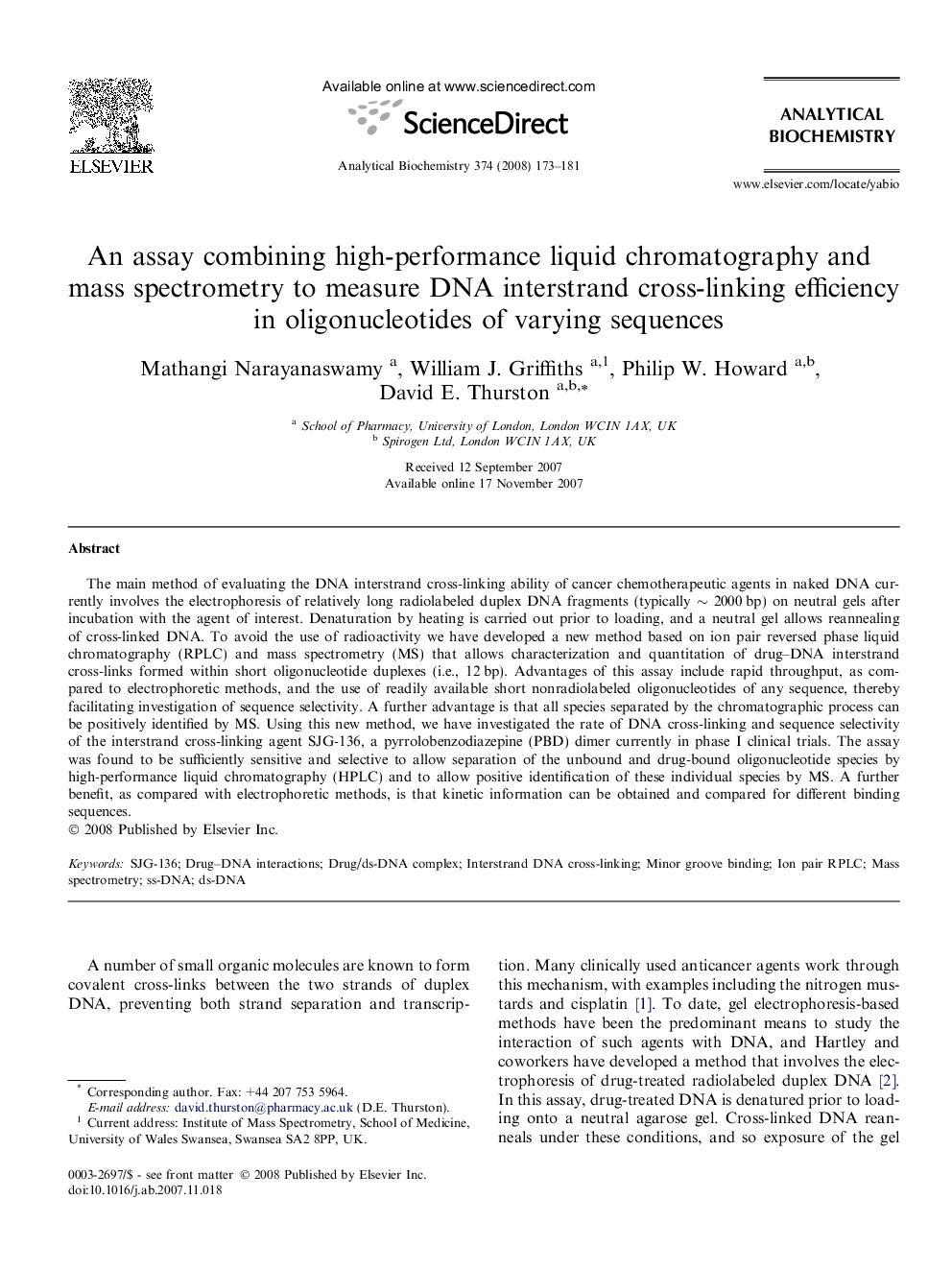| Article ID | Journal | Published Year | Pages | File Type |
|---|---|---|---|---|
| 1177297 | Analytical Biochemistry | 2008 | 9 Pages |
The main method of evaluating the DNA interstrand cross-linking ability of cancer chemotherapeutic agents in naked DNA currently involves the electrophoresis of relatively long radiolabeled duplex DNA fragments (typically ∼ 2000 bp) on neutral gels after incubation with the agent of interest. Denaturation by heating is carried out prior to loading, and a neutral gel allows reannealing of cross-linked DNA. To avoid the use of radioactivity we have developed a new method based on ion pair reversed phase liquid chromatography (RPLC) and mass spectrometry (MS) that allows characterization and quantitation of drug–DNA interstrand cross-links formed within short oligonucleotide duplexes (i.e., 12 bp). Advantages of this assay include rapid throughput, as compared to electrophoretic methods, and the use of readily available short nonradiolabeled oligonucleotides of any sequence, thereby facilitating investigation of sequence selectivity. A further advantage is that all species separated by the chromatographic process can be positively identified by MS. Using this new method, we have investigated the rate of DNA cross-linking and sequence selectivity of the interstrand cross-linking agent SJG-136, a pyrrolobenzodiazepine (PBD) dimer currently in phase I clinical trials. The assay was found to be sufficiently sensitive and selective to allow separation of the unbound and drug-bound oligonucleotide species by high-performance liquid chromatography (HPLC) and to allow positive identification of these individual species by MS. A further benefit, as compared with electrophoretic methods, is that kinetic information can be obtained and compared for different binding sequences.
